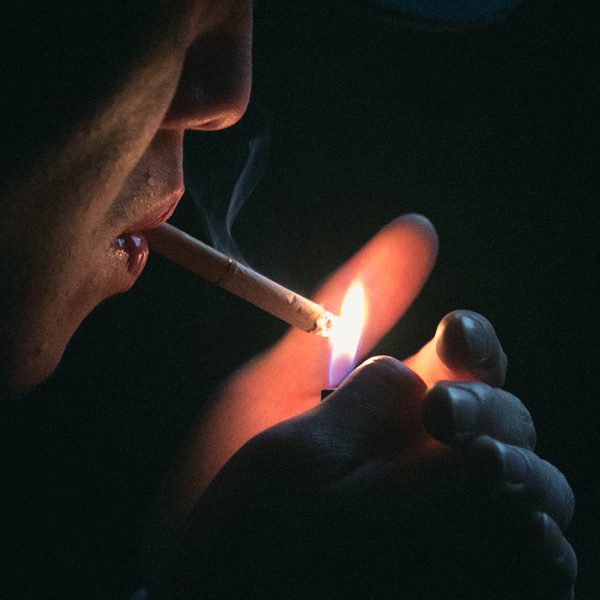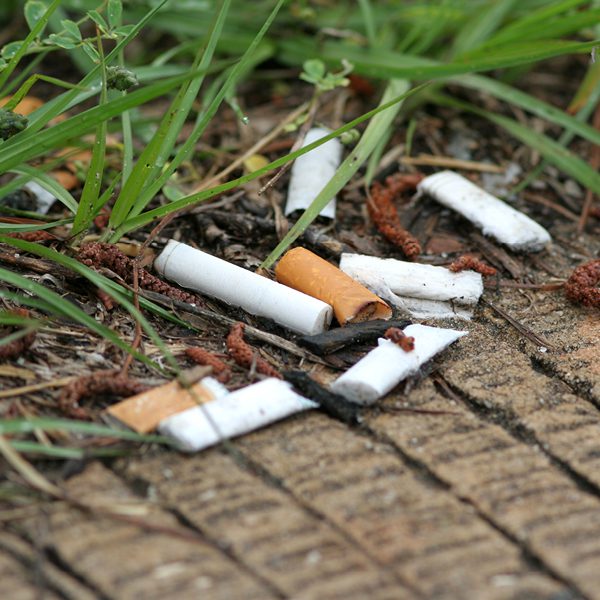Ashes to Ashes: Tobacco’s Journey from Plant to Cigarette.
Some argue tobacco itself isn’t harmful, that it’s the chemicals added to tobacco by manufacturers that make it a deadly product. The truth about tobacco is that at no point in the tobacco timeline — from budding plant to discarded butt — could tobacco be considered healthy.
PLANT LIFE

Right from the ground, tobacco is poisonous. Despite its beautiful green leaves and colorful flowers, simply touching tobacco plants can be hazardous to your health. “Green tobacco sickness,” a type of nicotine poisoning, afflicts anyone who handles its wet leaves without adequate protection. It is standard practice for tobacco farmers and workers to wear gloves and other protective clothing when handling tobacco plant leaves. Plus, nearly 40 carcinogens occur naturally in tobacco plants.
PROCESSING
Once tobacco is harvested and passed to Big Tobacco, it is enhanced to make it more flavorful — and addictive. Tobacco manufacturers can control and often increase nicotine levels. They add ammonia to make nicotine reach the brain faster. They add sugars and flavors to reduce harshness and make smoke easier to inhale.
DOWN IN FLAMES

Even with all the artificial additives and natural chemicals in cigarettes, the toxicity of tobacco is amplified when it is burned. Burning a cigarette changes its chemical composition, and more than 4,000 new chemical compounds are created in the smoke. Of those 4,000 chemicals, 70 of them are known to cause cancer.
GUILTY AS CHARGED
For decades, Big Tobacco has lied to the public — and to the government — about how addictive their products are. According to the World Health Organization’s “Tobacco Explained” report, Big Tobacco even suppressed scientific studies about nicotine’s obvious addictive properties. Internally, of course, they’ve always known exactly what they’re doing. They fully understand that without nicotine addiction, there would be no tobacco industry. In 2006, the U.S. District Court for the District of Columbia ruled that tobacco companies were guilty of breaking civil racketeering laws, marketing to children and minority populations, and lying to the public about the dangers of smoking. Starting in November 2017, three large tobacco companies were forced to run ads admitting their guilt in the national media and on their own cigarette packaging.
UP IN SMOKE
These toxic chemicals in cigarettes don’t just affect the smoker. Through secondhand smoke, nonsmokers are just as vulnerable. Secondhand smoke is a mixture of two forms of smoke that come from burning tobacco:
Mainstream smoke: The smoke exhaled by a smoker
Sidestream smoke: Smoke emitted from the lit end of a cigarette
Nonsmokers who inhale secondhand smoke take in nicotine and toxic cancer-causing chemicals the same way smokers do. The more they’re exposed to it, the more harmful chemicals accumulate in the body.
NO BUTTS ABOUT IT

Cigarettes continue to cause harm long after they’ve stopped burning. Each year, several trillion cigarette butts end up as litter worldwide. Cigarette butts were designed to filter out and accumulate toxins. Therefore, these butts may contain up to 60 known carcinogens. Butts expose humans as well as animals to toxins by leaching dangerous chemicals into soil and water.
CIGARETTES COST US ALL
Not only does every taxpayer pick up the costs of tobacco-caused illnesses, smokers cost businesses more than non-smokers through health care costs and lost productivity. Cigarette trash is also the most common trash that has to be cleaned up by city and state workers.
—
The good news is that quitting smoking can have a timeline of its own — a much healthier one. Within minutes of quitting, your health could begin an immediate turnaround. Each day you’re smokefree, your risk of disease diminishes and body functions return to normal. Click here to see how a timeline of your body’s response to quitting. If you’re thinking about quitting, visit OKhelpline.com for FREE resources.
If you’re thinking about quitting, visit OKhelpline.com for FREE resources.
To learn more about the negative effects and impacts of tobacco, visit StopsWithMe.com.
SOURCES:
- https://www.livescience.com/7914-warning-homegrown-tobacco-deadly.html
- http://www.madehow.com/Volume-2/Cigarette.html
- https://www.tobaccofreekids.org/press_releases/post/2014_06_23_report
- http://www.lung.org/stop-smoking/smoking-facts/whats-in-a-cigarette.html?referrer=https://www.google.com/
- http://www.davidsuzuki.org/what-you-can-do/queen-of-green/faqs/toxics/are-there-harmful-chemicals-in-discarded-cigarette-butts/
- http://www.who.int/tobacco/media/en/TobaccoExplained.pdf







